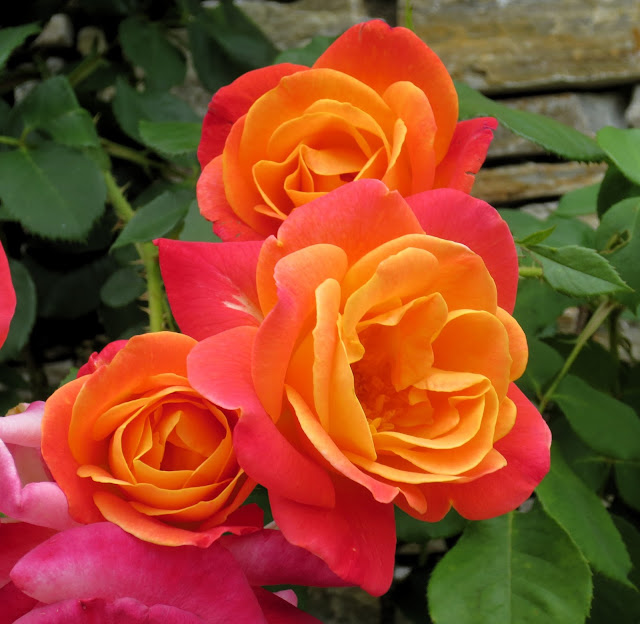In February, the large Eucalyptus tree that dominated our side yard was removed for reasons I detailed
here. At the time, I worried about collateral damage to the surrounding garden areas. The area most directly impacted by the loss of the tree was the bed directly adjoining the one in which the Eucalyptus formerly stood. Instead of nearly full shade, it now receives full sun - in fact, it became the sunniest bed in my back yard. While the tree service people did a great job of protecting the plants in that area, the plants suffered under the full sun exposure. Within weeks of the tree's removal, the ferns had yellowed, the
Pericallis (Florist's Cineraria) was burned and stunted, and the
Pseuderanthemum 'Texas Tri-star' was all but dead. I added some sun-loving annuals like the
Nemophila menziesii (Baby Blue Eyes), shown in the picture below, and, later,
Layia platyglossa (Tidytips) but, as time went on, the bed looked worse and worse. Only the pansies seemed to enjoy the change in sun exposure.
 |
| Former shade bed in March |
The plants in the former shade bed also didn't blend particularly well with the plants I'd selected to fill the adjoining bed formerly occupied by the Eucalyptus. I probably should tear out all the plants in the former shade bed and start from scratch but I'm giving the largest ones, 3
Acanthus mollis and 2
Arthropodium cirratum (Renga Lilies), a reprieve to see if they can adjust. Both varieties are said to handle full sun but it remains to be seen if that's true when the sun is accompanied by high summer-time temperatures, low humidity, and regular Santa Ana winds. I've relocated the ferns and some of the other shade plants that weren't already dead. This weekend, I filled some of the empty spots with new plants, including
Aster novae-angliae 'Skyscraper',
Briza media,
Teucrium betonicum, and
Verbena lilacina 'De La Mina'. In addition, I moved a
Salvia leucantha 'Waverly White' from the back border to this one. All of these plants are reported to be drought and heat tolerant.
 |
| Former shade bed after replanting |
 |
| Newly planted Aster novae-angliae 'Skyscraper', said to get up to 5 feet tall and wide |
 |
| Briza media (Quaking Grass), which grows 12-18 inches high |
 |
| Teucrium betonicum, which should form a 3 foot mound at maturity |
 |
| Verbena lilacina 'De La Mina', said to grow 2-3 feet tall and wide |
 |
| Salvia leucantha 'Waverly White' |
The Baby Blue Eyes I planted in February took a beating under our relentless Santa Ana winds so I pulled them out and filled in with more
Ajuga repens 'Catlin's Giant' along the pathway that separates the former shade bed from the former Eucalyptus bed. I also added
Pratia pedunculata (Blue Star Creeper) between the flagstones, which is already filling in nicely.
 |
| Replanted pathway |
I think the plants on the 2 sides of the path now blend together somewhat better, although I'll have to wait until some of the new plants grow up and flower before I draw any final conclusions.
 |
| Broader view of 2 adjoining beds |
The next major project is to remove some of the nearly dead "lawn" surrounding these beds. This section of grass (weeds) wasn't in good shape to begin with as it was riddled with tree roots. When the Eucalyptus came down, it took a thorough beating because the tree service guys used it as a staging ground when they cut up the branches and trunk of the tree. My plan is to extend the existing flagstone path to the side patio and also through the arbor toward the path that leads to the lower section of the front garden. I'll probably fill in around the expanded path with other low-growing groundcovers.
 |
| Damaged lawn area |
Instead of collateral damage, I'm trying to see all this as a new opportunity but, in any terms, it's still a lot of work.






















































